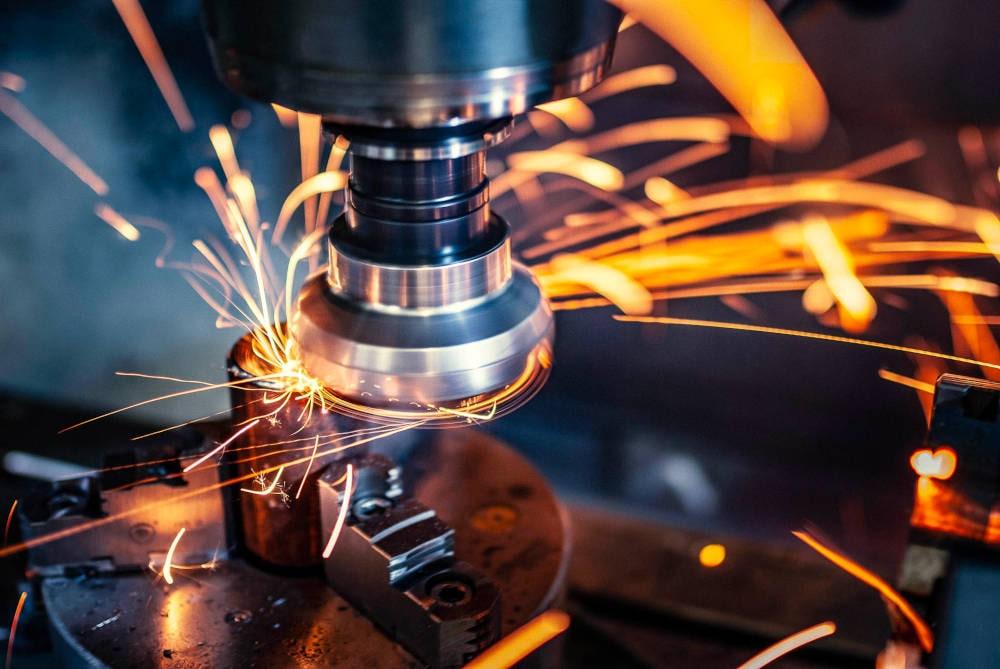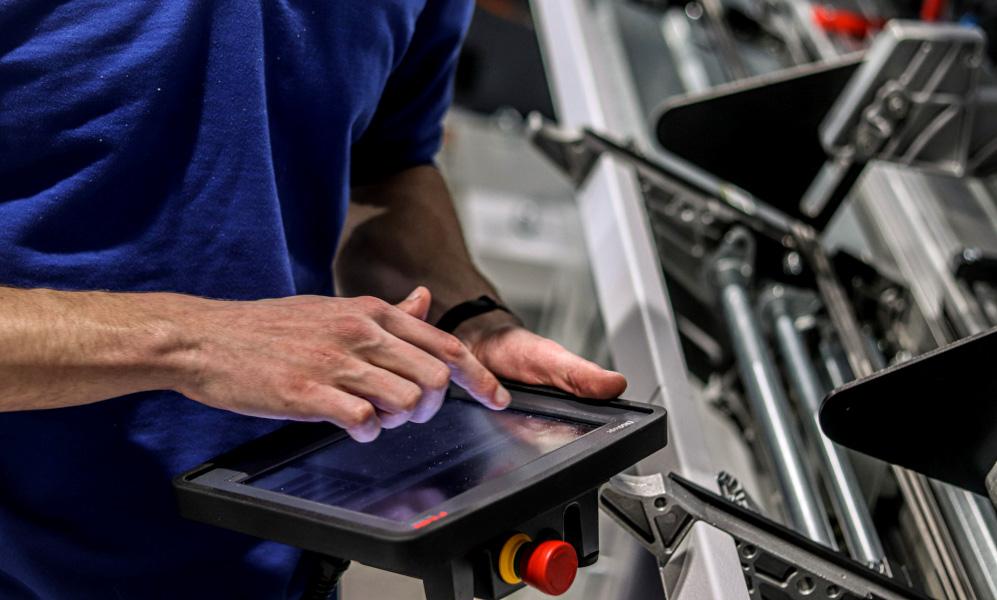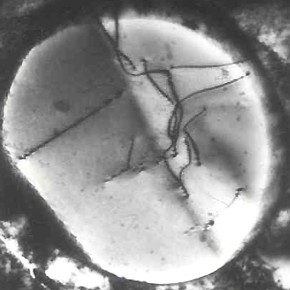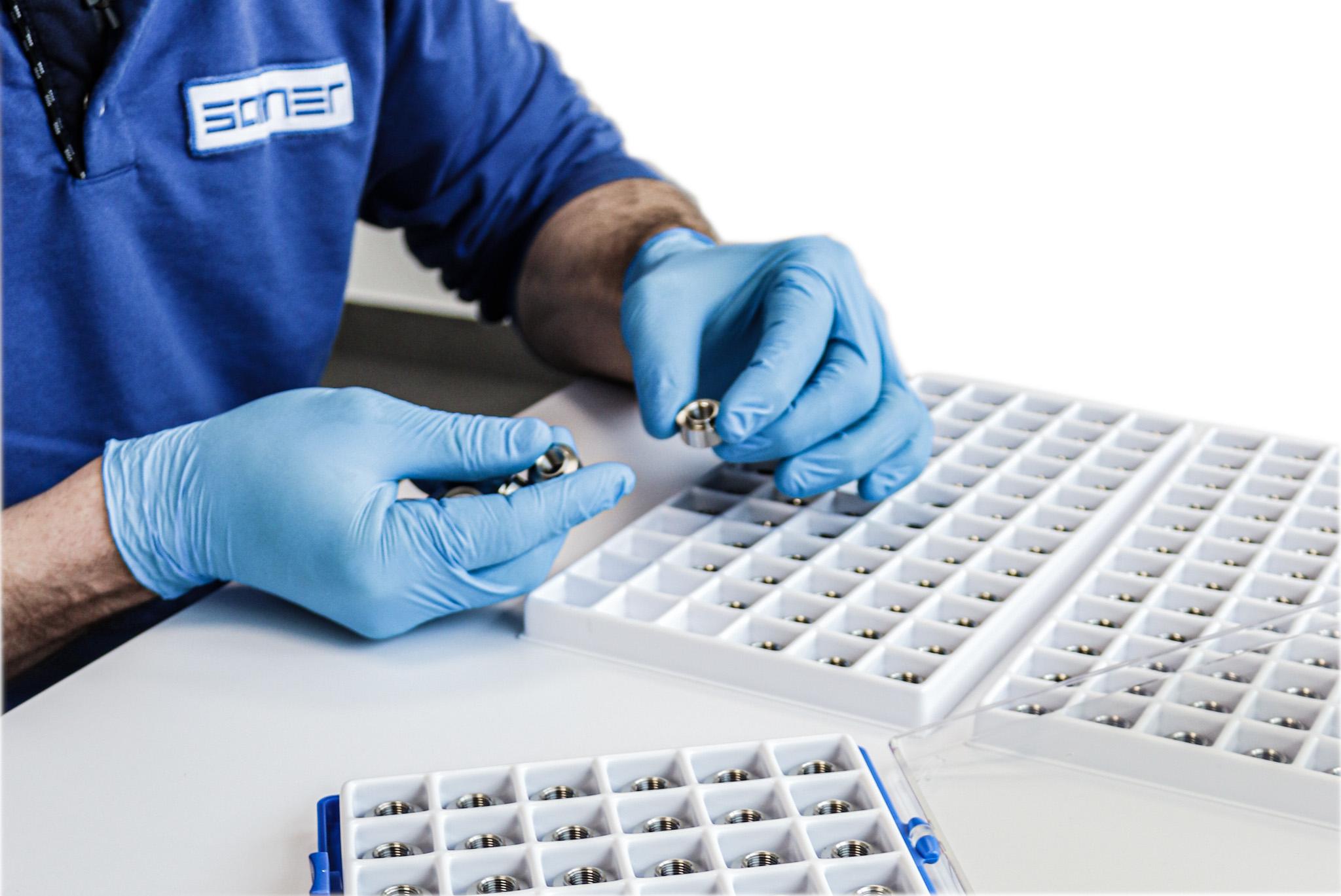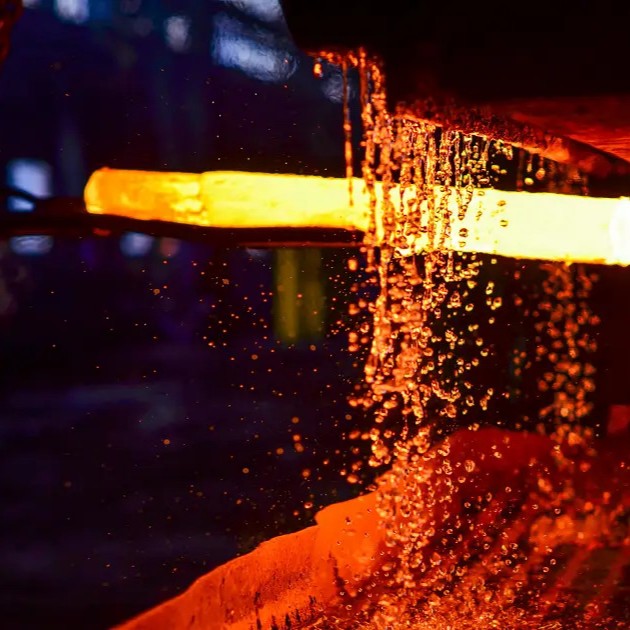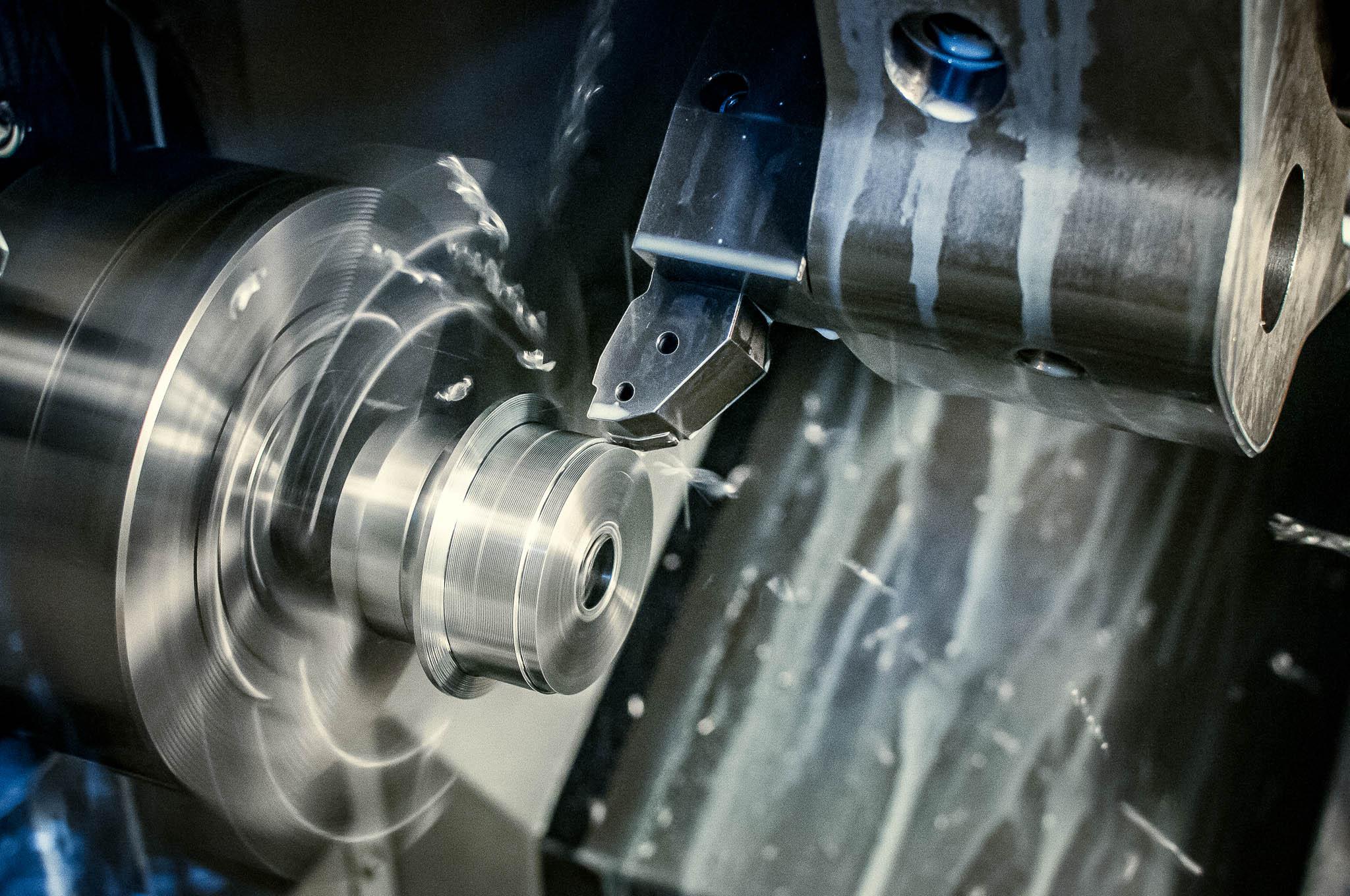CNC milling
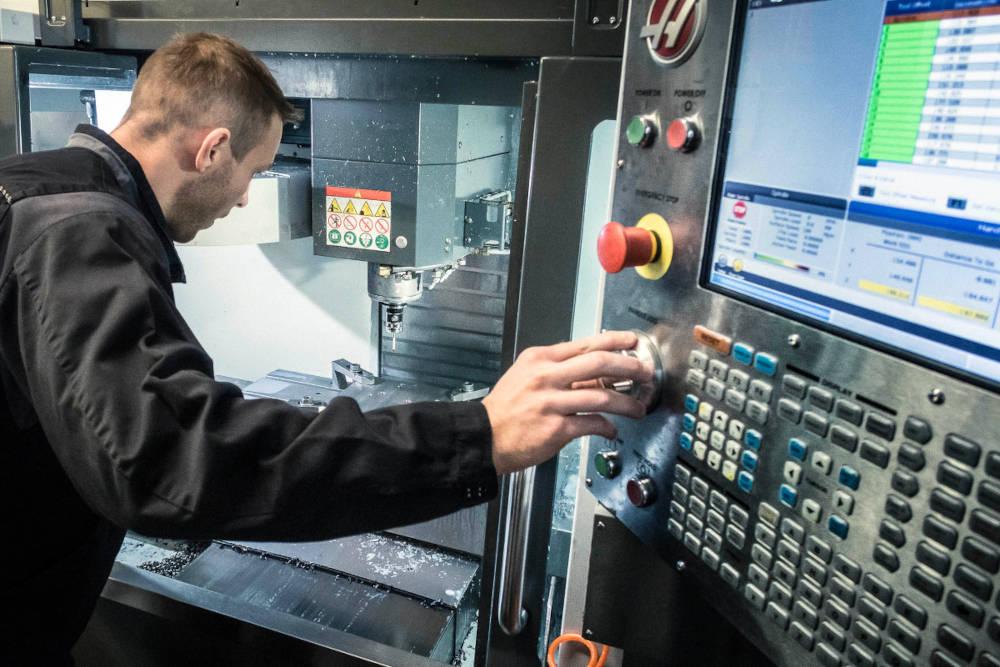
What is CNC milling?
Milling is the most versatile machining method. It makes it possible to obtain virtually any shape. It involves separating a material layer from the workpiece with a tool, usually a milling tool. With this technology, the workpiece is stationary, while the tool performs a rotary motion that allows material cutting.
Compared to turning, the main difference is the design of the cutting tool. Milling tools usually have multiple cutting edges. This causes milling to be interrupted machining, during which the cutting edge cycles in and out of the workpiece material. Because of this, the chips that form in this process are generally short and loose.
In general, metal milling on CNC machines is a process that requires adequate knowledge, experience, and modern equipment. To meet the ever-increasing demands in precision parts manufacturing on CNC machining machines, it is necessary to know the machining technology, material properties, and the possibilities offered by modern cutting tools.
Precision milling is a particular case here, where all these factors play a crucial role. It is often the case that a particular project needs to be approached individually so that the final result is satisfactory to the customer. For this reason, CNC milling of metal parts is worth entrusting to specialists with relevant experience.
CNC milling of aluminum
Aluminum is a very common material in machining. Due to its perfect relationship between its weight and strength, it is eagerly used by designers. The unique features of aluminum are especially used in the aerospace and automotive industries, where the weight of parts is crucial. Aluminum milling can be done quickly and efficiently, provided the right approach is taken. Controlling the adhesion of the material to the tool and the tendency of the resulting chips to scratch the machined surface is key. By using the right tools and cooling the machining zone, an efficient process can be achieved.
CNC milling of stainless steel
This particular group of materials belongs to the category of alloy steels. It is distinguished by the use of certain alloying elements, such as chromium and nickel, which contribute to the corrosion resistance of such steel. Stainless steels come in various grades depending on the expected properties. From the point of view of machining, it is important to divide stainless steels according to their internal crystalline structure. And so we have ferritic and martensitic steels, which are well machinable, and austenitic steels, which tend to cause problems when milling.
CNC milling of steels
Steels, due to their popularity in industrial applications, are the primary material used in CNC milling machines. Due to the widespread use of steel, they are available in various grades that differ in their properties. The basic division is adopted, considering the content of carbon and other alloying additives. Thus, we distinguish between:
Carbon steels
The group of steels with a carbon content of up to 0.55% very often poses problems in milling due to difficult chip formation.
Low-alloy steels
This is the most common group of materials for milling and is characterized by relatively good machinability.
High-alloy steels
A wide-ranging group of steels with a considerable variety of characteristics and parameters depending on the alloying additives used.
Basic CNC milling operations
Face milling
This is a basic milling operation, often referred to as face milling. It is usually done using tools with an entering angle of 45 degrees for better chip formation. For face milling, polygonal or circular insert tools are also often used. This improves the economy of the process due to the large number of cutting edges available.
It is also worth mentioning the possibility of using wiper inserts in the finishing operations of face milling. This is a special type of cutting insert with an above-standard cutting edge width used to improve surface quality. They are used in combination with standard inserts in such a way that one or more wiper inserts are embedded in the head next to the milling inserts in such a way that they protrude below them by about 0.05 mm. This makes it possible to pick up the resulting surface irregularities left by the other cutting edges.
Shoulder milling
This is a type of milling in which machining is carried out using the front and side cutting edges of the tool blades so that two planes are obtained simultaneously after the passage of the cutter. In this case, there is a wide variety of tools to choose from, ranging from milling heads to milling cutters to endmills. This makes it possible to achieve an optimal machining result, with one of the basic requirements being a true 90-degree angle between the machined planes.
Profile milling
This is a group of operations typical of CNC machining and impossible to perform on conventional machine tools. This category includes machining parts in multiple axes simultaneously, shaping concave and convex forms in two and three dimensions. Advanced toolpath programming is necessary here for optimal machining results. In principle, the process should be divided into three types of operations: roughing, semi-finishing, and finishing. For parts requiring very high surface quality, high-speed machining techniques known as HSM are used.
Groove milling
Most milling applications require various types of grooves, channels, or sub-grooves. These grooves can be shallow or deep, closed or open, short or long, wide or narrow, and straight or curved. Depending on the specific task, the appropriate technique and tool should be selected. Milling cutters are dedicated tools for either grooving or cutting operations.
They can effectively perform long, deep open grooves with a guarantee of stability and productivity for such an operation. They can also be combined into assemblies, multiplying the volume of material removed in a single pass. The definite advantage of this type of milling tool is the ability to pick narrow and deep grooves stably, so they should be the first choice in this type of application.
Thread milling
Thread machining on milling machines is possible in a full range of applications for internal and external, right and left-hand threads of any pitch. The basic tools used in thread cutting still include thread taps and threading dies. A more advanced form of internal thread shaping is thread forming. For this purpose, there are so-called cold forming taps, which by their design are very similar to thread taps because they do not have cutting edges, but only tops and lubrication channels.
Their work is to form the thread plastically, thus avoiding the formation of chips. Another way of forming threads is milling them. Here, we have at our disposal a number of more or less versatile tools that allow us to cut almost any thread. Milling is less efficient than thread forming. Still, it allows the greatest control over the process and complements it in cases where we cannot use a cold-forming tap.
Specifics of the CNC milling process
CNC milling is a vast field of technical expertise. Because of its flexibility, it has great potential in manufacturing all kinds of components. In addition to traditional applications, milling is often an alternative to other methods, such as CNC turning. The basis for designing effective and efficient processes for milling machines is knowledge of technology and programming principles. Often, we can perform the same tasks in several or even a dozen different ways.
However, this means that only some ways are good. The milling configuration must be carefully thought out. There may be deep pockets, thin walls, interrupted machining, or inclusions in the material that need to be considered. The choice of milling method also depends largely on the available machine tool, its type, size, and power. Heavy horizontal machining centers offer other possibilities and five-axis machine tools that offer smooth control in all axes.
Specialists at our company are well versed in the arcane knowledge of CNC milling with modern, high-performance machining centers. Thanks to this, they can properly plan the process so that the CNC machining of your parts is carried out as productively as possible while maintaining stably high product quality.
